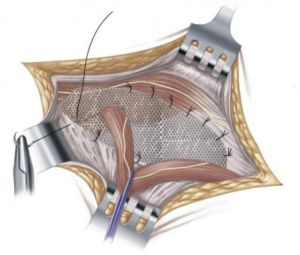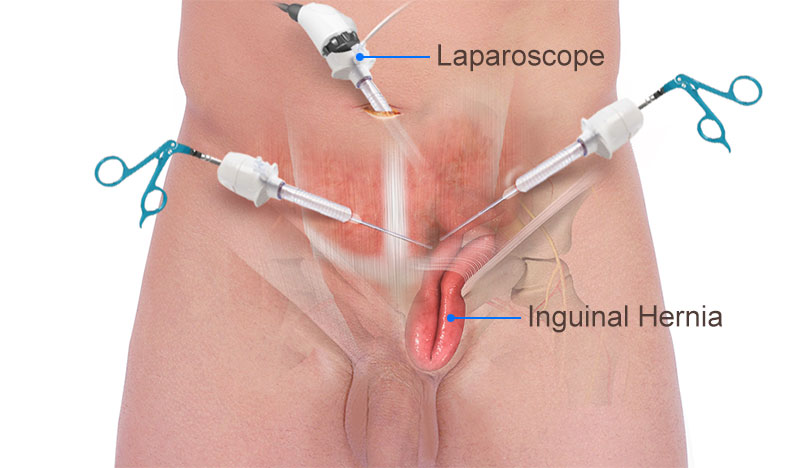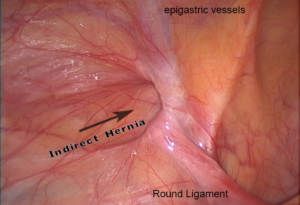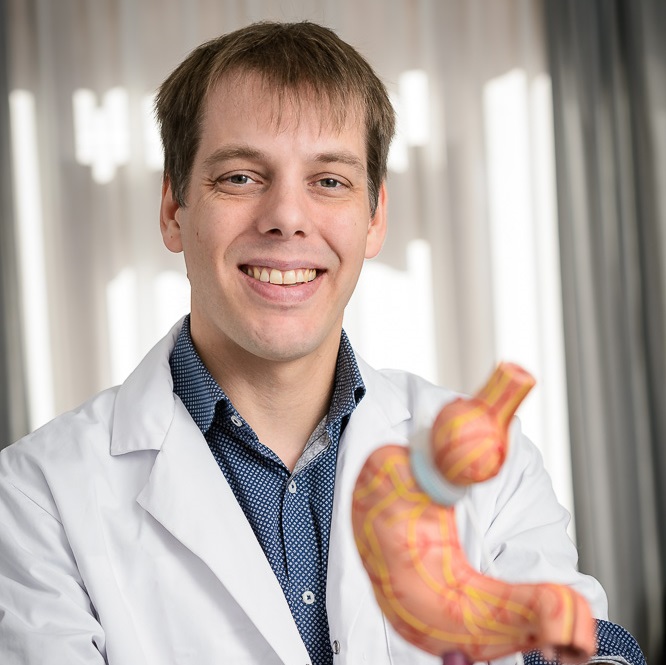Inguinal hernia treatment
Surgical operation is required for all inguinal hernias. An operation is necessary to prevent complications such as strangulation. For children, surgery is almost always the preferred option. If the hernia can be pushed back, the surgery is non-urgent and will be executed at the patient’s earliest convenience. If the hernia can’t be pushed back, surgery cannot be postponed.
There are two types of operations:
Open inguinal hernia repair
In case of open inguinal hernia repair (also called the Lichtenstein procedure) a long incision is made in the groin. If the hernia bulges out of the abdomen, it is pushed back into place. If the hernia is located in the inguinal canal, it has to be pushed back or removed surgically.
The weak spot in the muscular wall where the hernia bulges, is usually repaired by placing a small piece of synthetic tissue over the weakened area in the abdominal wall after the hernia is pushed back. Some patients get to return home the same day of the surgery. Recovery time is about three weeks.

Laparoscopic inguinal hernia repair
A laparoscopic inguinal hernia repair (TEP) resembles other exploratory surgeries. A small incision is made above the navel, under general anesthesia. A small camera is inserted though the incision, other instruments through two incisions in the lower abdomen. Most patients get to return home the same day of the surgery. Recovery time is one to two weeks.
Advantages
A TEP offers the following advantages compared to open inguinal hernia repair:
- Smaller incisions
- Less painful
- Shorter recovery time
- More suitable for repairing recurring hernias
- The possibility of spotting and repairing a second hernia on the other side
Risks
A laparoscopic inguinal hernia repair (TEP) contains the following risks:
- Risks of general anesthesia
- Pain in the testes or spermatic chord
- Damage to the spermatic chord, possibly leading to infertility
- Fluid or blood in the scrotal, groin or abdominal muscles
- Bladder trauma and/or not being able to urinate
- Infection caused by the synthetic tissue or staples
- Formation of scar tissue (adhesion)
- Trauma to the abdominal organs, blood vessels and nerves
- Numbness or pain to the thigh
- Trauma to the testes causing testicular atrophy (rare)
- Relapse (1 to 10% chance)
Therefore, laparoscopic inguinal hernia repair isn’t recommended in case of:
- A constricted hernia
- A general medical condition that is too severe for general anesthesia
- Hemophilia or other blood disorders
- Regular intake of blood coagulation medication
- Multiple abdominal surgeries in the past
- Severe lung diseases
- Pregnancy
- Obesity
Some patients require special preparation to lower their chance of complications if one or more of the following factors apply to them:
- A history of blood clots in major blood vessels
- Smoking
- Intake of large doses of aspirin
- Intake of blood thinners
- Severe urinary problems




